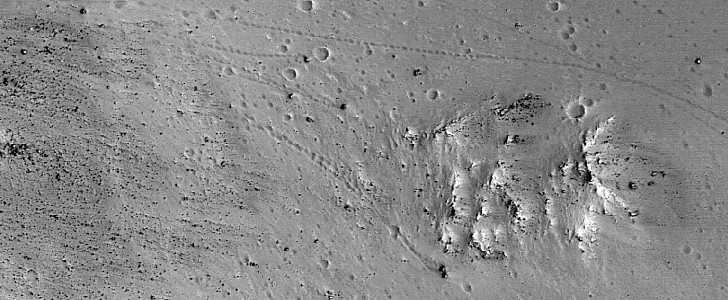Now that we have tens of thousands of images of Mars as seen from space at our disposal, it’s quite easy to say what a magnificent and mysterious place the neighboring planet is.
All these images, which we got over the years, have been snapped by an incredible instrument called High Resolution Imaging Experiment (HiRISE), orbiting the planet a few hundred miles up, on board the Mars Reconnaissance Orbiter (MRO). And few of them do not show something extraordinary, or in some way relevant to the onlooker.
Even the one we have here, which appears to show something that at first glance may sound boring, boulders, actually turns out to be quite exciting.
Taken by HiRISE back in February of this year, it shows a portion of the Eos Chasma rim in the larger Valles Marineris system, degraded by active erosion. We get exposed layered bedrock, but also 13-foot (4 meters) boulders neatly lined up along presumed individual lava flows and perched precariously on the rim.
“How long will the boulders remain poised to fall, and what will push them over the edge?” ask the people over at NASA and the University of Arizona, who run the orbital camera.
That something that will push them over the edge would probably be weather, such as it is in that place. According to scientists, “each daily temperature cycle and each seasonal change from summer to winter produces a cycle of expansion and contraction that pushes the boulders gradually closer to the brink.”
Most of the boulders seen in the picture are expected to eventually start racing toward the canyon below, traveling at times for as much as 0.6 miles (1 km) before coming to a halt. They make tracks in doing so, visible in this pic as well, and suggesting such events occurred in the area recently.
Even the one we have here, which appears to show something that at first glance may sound boring, boulders, actually turns out to be quite exciting.
Taken by HiRISE back in February of this year, it shows a portion of the Eos Chasma rim in the larger Valles Marineris system, degraded by active erosion. We get exposed layered bedrock, but also 13-foot (4 meters) boulders neatly lined up along presumed individual lava flows and perched precariously on the rim.
“How long will the boulders remain poised to fall, and what will push them over the edge?” ask the people over at NASA and the University of Arizona, who run the orbital camera.
That something that will push them over the edge would probably be weather, such as it is in that place. According to scientists, “each daily temperature cycle and each seasonal change from summer to winter produces a cycle of expansion and contraction that pushes the boulders gradually closer to the brink.”
Most of the boulders seen in the picture are expected to eventually start racing toward the canyon below, traveling at times for as much as 0.6 miles (1 km) before coming to a halt. They make tracks in doing so, visible in this pic as well, and suggesting such events occurred in the area recently.






